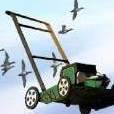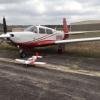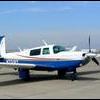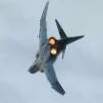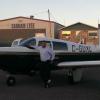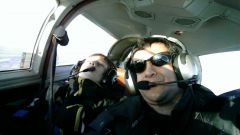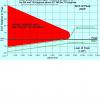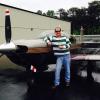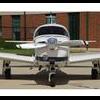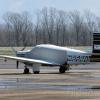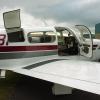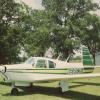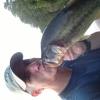Leaderboard
Popular Content
Showing content with the highest reputation on 06/21/2015 in all areas
-
Last trip to San Antonio from El Paso we hit 288kts ground speeds with a 46kt tail wind @FL23 Fastest ground speed I have achieved.3 points
-
Ever since that SB came out, I've been very reticent to pull back on the yoke to lift the nose off the ground for takeoff. I sure don't want the tail falling off during a critical phase of flight. I now use an engine hoist to set the proper takeoff attitude, but getting the dang thing off during takeoff roll has been a bitch...especially on our turf runway.3 points
-
2 points
-
The FBO/Jet Center is handling it on a very professional level and their insurance is working promptly to cover the costs related to their negligence. I hope things stay smooth till my plane is returned to service. The A&P that caused the issue, has stated that he did not start the engine after the repair. So no checking for leaks, vacuum, electrical short or proper operation of the overhauled starter adapter or new starter. Yes it needs an engine. I also now see the true benefit of the JPI 830 engine monitor that I installed a few years back. The JPI warned me of the problem before I departed. Thanks to JPI!2 points
-
I think Peter may be onto something with that unit. Just looked it up, and there is a 24V version too :-) I was wondering if a long evaporator in the overhead vent supply tube would be able to absorb enough heat, and then a small network of pipes in the tail cone could radiate the heat through the skin. If the numbers worked, then those compressors are about 2lbs each, say 20 feet of 1/4" aluminium tube would be a similar, and a few controls and power cable would hopefully keep it within about 6lbs - which happens to be the weight of a charlie weight! Weight down the back, but doing something useful rather thank just carting it about2 points
-
I'm amazed at the resistance to change! It's like trying to teach old dogs new tricks! To me it doesn't matter how it's been done before or for how long or why they decided to change it. This is how Mooney wants us to do it going forward. It may be new engineers saw things differently and decided this procedure is better done this way. It could very well be that they are not comfortable with the multiple moments and the moment arms of the forces developed when weighing down the tail. I don't know and certainly not going to argue with them! I'm just happy it's just an SI and they didn't issue an AD to check the tail! And this argument that the tail is so strong to lift the nose on takeoff etc etc, I'm not sure is relevant when all that weight is concentrated on the tail tiedown with clumsy humans jumping on the wings in and out to swing the gear. To me that's as relevant as the prop argument. The prop is strong enough for flight therefore it can be used to pull/push the plane on the ground. This right in the face of McCauley who, emphatically, says don't do it! I don't see the connection of either argument frankly!2 points
-
2 points
-
Here’s an ADS-B Out/In installation and operation PIREP that hopefully will be useful to some of you. Since it is quite long, for those of you just interested in the bottom line, get your installation done now, don’t wait like I had been doing. You will be pleased with the results and increased situational awareness, safety and functionality. A two-year process of research, consideration and waiting comes to a very happy ending... Like many of you, I have been evaluating the multiple options available to meet the ADS-B mandate for my M20J. I gave up multiple times in frustration over the equipment costs, interoperability with my existing equipment, and fuzzy plus sometimes hidden costs of installation. I have also been waiting, betting and speculating on the price of the equipment and installation becoming more affordable, and hoping for an FAA extension to the 2020 mandate. Until this past May 2015, I was comfortable with waiting while using my portable Skyradar ADS-B In solution and WingX. However, I have been dissatisfied with the partial traffic information received, and only when there was another aircraft using ADS-B Out in my vicinity. I partially filled the gap using a ZAON MRX Portable Collision Avoidance System (PCAS), which I found very useful in alerting me to nearby traffic. I have the MRX for traffic warnings on the glare shield and within my scan when looking outside, but getting the traffic on my iPad required me to spend too much time looking inside instead of outside. However, having an ADS-B Out installation is the only way I know to continually get the full traffic capabilities from TIS-B, which is very important to me from a flight safety perspective. After evaluating many potential configurations and their functionalities, I had decided to go with the configuration that I will describe next. I was also waiting for the equipment prices to come down some more, or new/more capable equipment options, while searching to find the most affordable (and high confidence) total installation cost. Recent close calls with other traffic, forced my decision to act now, and get the increased situational awareness and functionality from a full ADS-B Out/In solution. RESULTS: After talking with many shops, I contacted SMART Avionics (N71) on the recommendation of another Mooney owner and satisfied customer, and then flew the airplane to N71 to discuss the details. I knew what I wanted and had a price range differential of around $2,000 from lowest to highest from other avionics shops. Ben Travis (owner) has done several similar installations on Mooneys, so he was able to give me a high confidence estimate on the spot, and he was able to fit me into his schedule just a couple of weeks later, which was a major factor in my decision. I delivered the airplane on a Monday ang got it back mid-day Friday the same week. The work was performed on schedule and within the price quoted and I am very pleased with the end-to-end process and results. HARDWARE CONFIGURATION: The installation in my M20J integrated the existing GNS-530W with the installation of a new Garmin GDL-88 plus ADS-B Antenna (bottom only), new Garmin Flight Stream 210 (FS210), and replacement of my obsolete (but functional) altitude encoder with a new ACK A30.9 Mod 9 Altitude Encoder. The GDL-88 and FS210 were installed on the shelf in the tail battery compartment, and cabling was run forward to connect with the 530W and Altitude Encoder. The GDL-88 receives traffic on both the 978 MHz and 1090 MHz frequencies but transmits only on 978 MHz. The 1090 MHz reception enables direct reception of traffic reports from other aircraft, instead of having to rely on being within ground station coverage or ADS-R for the complete traffic picture; another nice feature. Other than a new circuit breaker for the GDL-88/FS210 and replacement of the existing encoder, nothing new was added to the cockpit. SOFTWARE CONFIGURATION: GNS-530W Main Software updated from v5.0 to V5.2, plus new Garmin Pilot (“Pilot”) installation running on the iPad-mini (“iPad”). Before making the decision to proceed with the ADS-B configuration, I learned that getting the maximum functionality out of the installation would require using Garmin Pilot instead of my long-time favorites WingX and Foreflight. I installed and used a 30-day trial version of Pilot and was surprised at how quickly I learned the features, some of which I like far better than those in WingX and Foreflight, as well as new features not available in either. Using the ADS-B Out/In during the trip home was great, and better than expected... Immediately after arriving at N71 for the return flight home, we fired up the avionics and Ben took me through the steps of connecting the iPad/Pilot with the FS210/GDL-88 via Bluetooth, and demonstrating the two new weather and traffic screens on the 530W, plus other features and functionality. We then took care of the paperwork and I started up and took off for a short flight around N71 to confirm all was working as expected, which it was. The return flight to home base was even better. For the return, I filed an IFR flight plan with the iPad/Pilot consisting basically of a few intersections between departure and destination and got the weather and NOTAMS briefing. I started up for the return around 30 minutes later, linked the iPad/Pilot to the FS210/GDL88 within 5 seconds and with a single menu selection on the iPad/Pilot. This is when I got an alert on the iPad/Pilot from ATC proposing new routing. It included a victor airway, which my 530W does not accept and would have required a bit of time to find and get the proper entry/turn/exit points entered, but not this time. I made one menu selection on the iPad/Pilot to accept ATC’s proposed rerouting, which automatically loaded the new route on the iPad/Pilot, and made a second selection to transfer the new routing from the iPad/Pilot (through the FS210) to the 530W. I verified the 530W flight plan had the new routing, including all appropriate points on the victor airway, and in the process saved several minutes over my past manual entry way of doing things. Since I could not raise clearance delivery on the ground, I departed N71 under VFR and climbed enroute toward the first point on the flight plan, then called departure and coordinated activation of my flight plan. It is noteworthy that prior to the ADS-B Out/In installation, I would have departed the same way and would then have to spend quite a bit of time changing my preflight routing to the one ATC was giving me. The first flight plan point was in the opposite direction of my eventual direction of flight, so I requested from ATC direct to the nearest intersection in my desired direction. When ATC approved I selected direct to the intersection on the 530W and the FS210 automatically updated the flight plan on the iPad/Pilot. Other routing changes later worked the same way, entered a new point, deleted another in the sequence on the 530W and the FS210 updated the routing on the iPad/Pilot. During the flight the traffic display worked great, both on the iPad/Pilot and the 530W, and I really liked the Garmin target trend indicators for each target. There was far more traffic around me than my prior portable ADS-B In installation would show. Having this new level of situational awareness helped me understand why ATC started providing a series of direction vectors to keep me way from the gaggle of traffic arriving at KFDK for the AOPA Fly In the next day, as well as enabling to better anticipate what ATC had for me next. I was flying at 6,000 feet and well above a pretty solid deck from 3,000 to 5,000 all the way home and could see some thunderstorms in the distance that were showing up on the iPad/Pilot and 530W, but well clear of my route. I was having so much fun during the flight exploring all the cool new features of my ADS-B Out/In installation that I forgot to explore the 3D Synthetic Vision and AHRS backup attitude, altitude, speed and heading the FS210 also provides. I did check it out on the ground at N71 before departing, and will definitely be exploring its usefulness in the future. The GDL88/FS210 installation also includes a traffic Conflict Situational Awareness feature, visually on the 530W and iPad/Pilot (I think) and through the cockpit audio, but thankfully no other traffic got close enough to set it off, so I’ll have to wait to determine how well that works. If it is anything like the feature in the G1000 equipped C182T that I also fly, it certainly gets your attention. Getting to my final ADS-B choice and how… Before deciding on the configuration above, I explored many potential solutions and was frequently disappointed to learn that plug-and-play really is not, and often brings hidden installation costs that one may not learn about until the installation is already underway. I discussed options and obtained widely ranging price quotes from multiple shops in VA, MD, PA and NJ, some of which I have been and will continue to do business with, others from which I will steer well clear off in the future. Since I already had a 530W for the WAAS position source, my lowest cost ADS-B Out configuration was to replace my KT-76A with a KT-74 and continue using my portable Skyradar + iPad/WingX for ADS-B In. The sales brochures claim the KT-74 is a drop-in replacement for the KT-76A, which apparently it is, but to use it as your ADS-B Out solution also requires connecting it to a WAAS position source. That requires a new tray (cannot reuse the one from the KT-76A, or so I’m told), and increases the equipment costs, requires more wiring and increases the total installation cost. I also learned that to sell my KT-76A and get some money back really required selling it with its installation tray, otherwise it would bring in far less than similar units for sale with the tray. If you have a retractable gear airplane, the installation also requires an additional airspeed switch, and yes higher installation cost. I also considered a number of other solutions, but will only mention the next one since this is already a very long PIREP. On the high end, I considered the Avidyne trade-in program to replace my GNS-530W and transponder with an IFD540 GPS, plus AXP340 Transponder, and MLB1000 ADS-B In receiver. This is a highly capable system, with a lot more and different functionality than my 530W and portable ADS-B In. My installed cost quotes were more than 3.5X the cost of the KT-74 plus my existing ADS-B In. While this may be a good option for many, for me it simply cost too much for the ADS-B Out/In and added navigation functionality, and there may be hidden installation costs in my Mooney, along with uncertainty over the functionality/interoperability with applications such as WingX and Foreflight. For example, my discussions with sales people and avionics shop failed to identify the need for my configuration to also replace the altitude encoder. Final words…stop waiting, finish investigating options, and make the switch to ADS-B Out/In, you will be very glad you did! All the best - Hank1 point
-
Considering a first aircraft purchase. 1962 M20C 2850TT, 375 SMOH in 1995. Gear up in 1992 repaired. It seems many linkages/rods were also repaired. Prop replaced at the same time. Hangared entire life. Last annual was in 2010. Owner said he's been regularly doing washing, start, taxi, runup and changing the oil. Pictures show that the paint is great and leather interior is very good. Price is $22k. http://www.trade-a-plane.com/detail/aircraft/Single+Engine+Piston/1963/Mooney/M20C/2086734.html My mission is mostly me flying and hopefully occassional family flight (wife and 7 and 8 year old kids) Seems like it could be a good buy but would like to hear your opinions. Thanks, Hish1 point
-
I do not know how many times from GA to 121 I have seen a mechanic change a part like a landing light and walk away when done without even checking to see if it works. This goes on with fuel pumps radio boxes etc.......I hate to say it but it is mostly with mechanics in the USA.....go to Seoul or Hong Kong and it is a totally different experience. If it took you to remove 30 or 40 screws in a housing to get to a recog or landing light would you not want to see if the lamp is OK before putting the screws back only to have to take them out again and put back again....... I would love to look inside some of these A&P's cars. They say you tell what is going on inside someones brain by seeing how they keep the inside of their car.1 point
-
Bob, I'm terribly sorry to hear about your experience. Especially since I am an A&P. It leaves a black mark against all who worked hard to get the license and have pride in their workmanship. Given no extenuating circumstances, this mechanic needs to lose his license. When I was a military helicopter pilot my AC would walk into the hangar after work was completed on the ship we were to fly and ask, "who worked on it." The mechanic(s) would raise their hand. He'd say "OK get in and we'll test fly it". When I became an AC I did the same thing. No doubt the workmanship was top notch once they knew their ass was on the line. Maybe we should all do that.1 point
-
Congratulations and Happy Fathers Day! I went flying with my Dad today and there is nothing that I would rather have done.1 point
-
Yikes! Does this mean you need a new engine? VFR for departure after maintenance is my rule too.1 point
-
1 point
-
It makes me wonder what else Mooney pilots use as not designed. Do they use their self-propelled lawnmower as a car? Toaster as a space heater? Bars of gold as paperweights? I'm sure these sound ridiculous! Name something you did 40 years ago you do the same way now.1 point
-
Agreed on the 60-2. The one in my Saratoga was put in in the early 90s and is solid as a rock. You can also force glide slope capture by pressing alt if above GS. The KFC 150 in the mooney works really well but if I had to choose I'd pick the stec. I also like the fact the stec is rate based and independent of the vacuum system1 point
-
The "set points" are stored in non volatile memory that is overwritten when you re-calibrate. You enter the calibration mode by hitting the button once within a few seconds of turning on the unit. You stabilize the plane in climb at the speed you want to set as the top green light and hit the button again. Then you slow the plane (at a safe altitude) set up landing configuration and slow to near stall then hit the button again to set the bottom red light. Calibration done. The installation manual says there is no practical limit to the number of times you can re-calibrate. (I was alone when I set mine up, flying the plane near stall while also hitting the button. My low limit should be a little lower which I will do when I have a passenger with me other than my wife who will not be enthusiastic about an approach to stall maneuver.1 point
-
Just flew the "C" from California to Maryland this week. Not via the most direct route, but along the route I wanted and weather amended. It was about 2,800 nmi. Around 22 hours, of those nearly 3 actual IMC, one actual instrument approach. XM weather display was invaluable. Four crew cars borrowed. Lots of friendly people met. One day delay while mixture control replaced. Averaged 9 gph overall. 50 ROP. ForeFlight on iPad as valuable as the 530W, IMO.1 point
-
It is all a function of TAS +/- winds. For a normally aspirated airplane flying above the altitude where you develop your cruise power setting (i.e. about 9000 feet to get 65% in a normally aspirated Mooney) generally is almost never worth it, unless some awesome winds. Even then you have to factor how long and how slow you are going to go getting high. The book is relatively accurate in terms of TAS and climb rates + forecasted winds, just do the math and you can make the determination as to what is going to get you there the quickest. Key thing to keep in mind is forecasted winds do change. I have a Rayjay so a bit more practical to get up high, in order to keep cool in the climb I need to do 120-130mph which means 500FPM. Nothing worse than spending 40 mins climbing up and figuring out the best winds actually were 6000 feet below FL190 after you get there. Even worse than that is deciding to go back down to 13000 only to find the winds at FL190 were 30kts better given your current position :-)1 point
-
I have been fying turboed aircraft for 40 years. Sometimes you get enough tailwind to justify the climb time but other times you are better in the teens. Lots to learn before you can do the flight levels safely. Flying high is helpful and provides flexibility in travel. You, of course, need an instrument ticket and a fairly well equipped airplane. You will be climbing and descending through lots of cloud decks. Walt1 point
-
Last year we did Oshkosh followed by U.P. Michigan. The next month we did Dayton, Niagara Falls, Boston, Rockland ME, Branson Mo back to Arkansas. My wife can handle 3-31/2 hours for the first leg but only 2-21/2 hours after that. When I let her break open the coffee thermos our legs become shorter (or bladders smaller).1 point
-
I don't like things mounted on yokes as I like to use it to control the aircraft. My partners on the aircraft always leave it on but I take it off and throw it backwards each time. Sent from my SM-N9005 using Tapatalk1 point
-
Welcome and thank you for sharing your expertise Simpson. Great things come out through competition! Wish you and Avidyne lots of luck!1 point
-
1 point
-
i too keep a running list of Mooney's in a spreadsheet i keep with me when I fly. Have some 60 Mooneys that i have ran accross or know on MS or flown a formation flight clinic or the Mooney Caravan or have stopped by 5T6 and stayed with us. Have had over 11 Mooniacs stay or been guests in our home over the past couple years on thier way to somewhere and met even more. Several from here on MS. 2 weeks or so ago Mooneychief, couple months before that stinkbug, Yves & wife, Ed & wife, Yoda & wife, Pinto, Sandman, CFII, Jim Peace, Cowboy, N9207A, and many others... i know there are several i missed but you get the idea... This group of Mooniacs have been such a blessing to meet and get to know! Any Mooniac in the area of 5T6 / El Paso let me know and if anyway possible we'll meet up! Fly safe all1 point
-
Paint and interior mean almost nothing when it comes to an airplanes condition. We are talking about a single engine airplane. These have safety records worse then motorcycles. All that really matters is a good fuel delivery system and an impeccable engine and prop. Everything else is just fluff. Light corrosion can be fixed as most anything else. You need to ensure the plane flew often and the that the prop will turn while airborne. I cannot believe how many people fly their planes about 4 to 5 hours a year and say that their plane is the best of the best, ,,,after all the paint and interior are like new..............Newsflash !!! it is not the best of the best !!!!! I will take the ugliest plane that flys 10 hours a month over a beauty queen that flys 5 hours a year......... Rant over.......1 point
-
Very similar to how I acquired my bird. It belonged to my Dad and he just quit flying. It sat without flying (hangered) for over 20 years. He still tended to the old bird like he was going to fly again tomorrow. I finally told him that I was fixing to buy something and it might as well be his bird since I had known it most of my life. No it is not a show plane (paint gets some compliments and so so interior) and no it does not have a glass panel...but it is serving my needs quite well at the moment. Oil analysis are coming back better than some I've seen posted on here. I know my situation is a little different having known the bird and owner...but it did sit for unknown unexplainable reasons for an extended period. Not saying that I will not upgrade to a faster bird some day. At the moment we are having a blast in it (83 year old Dad is loving it as well). Just my 2cts. Larry1 point
-
You are going to fly your Fam correct? Airworthy and safe are 2 things that come to mind, you need to make sure both are met. Has he kept a log of the engine and taxi runs? Why no annuals (5 yrs of no flights)? Etc. I would say this is a risky proposition to say the least.1 point
-
I just did the same repair at the same spot... I took lots of pictures and videos of the process. I will post them soon.1 point

